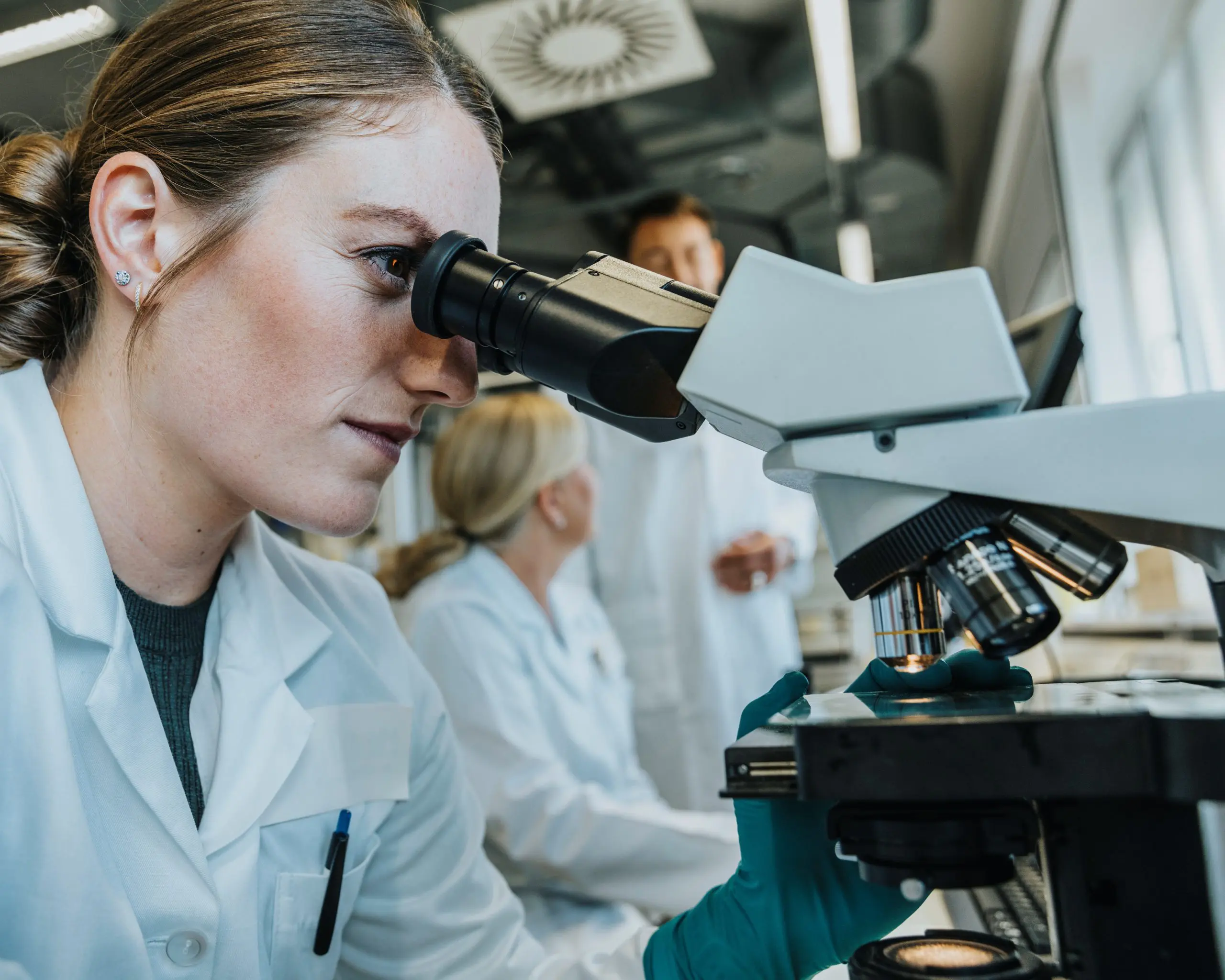With millions and billions of humans taking more medicines than at any time in history, an unanticipated drug safety problem can rapidly escalate to become a major public health threat.
Tackling this potential threat demands a multifaceted safety effort based on interdisciplinary scientific teamwork throughout the value chain.
SKAN accepts this responsibility and offers analytical services to jointly identify potential hazards and to protect customers’ products.
Service portfolio
- Hydrogen Peroxide Trace Analysis
Trace Analysis
The analysis for H2O2 traces is carried out with a sensitive enzyme-linked colorimetric method which uses a fluorescence signal.
The concentration of H2O2 in a given range (ng/ml) is linearly dependent on the signal of fluorescence, which is measured with a suitable spectrometer.
Why a H2O2 -Trace Analysis?
In isolators, different H2O2 concentrations occur. For safety as well as quality reasons, it is important for the user to know how much H2O2 is in the gas phase as well as in the packaging materials used and especially in the end product.
Our method can therefore measure H2O2 traces.
The Challenge
- Ensure that H2O2 residues, entering final drug product containers (e.g. vials, syringes etc.), are within acceptable ranges (this affects the decision on the target concentration after the aeration phase)
- Absorption of H2O2 residues on empty glass surfaces (vials, syringes), open (unstoppered) filled vials or syringes, or filling line tubings
Our Solutions
- Measurement of H2O2 ingress into packaging materials
- Investigation of H2O2 uptake by certain materials (e.g. stoppers)
The Advantages
- Test development based on scientific know-how
- Interdisciplinary team of experts with extensive experience
- Different target concentrations of H2O2 can be simulated (exposure to a constant concentration of H2O2 as low as 30ppb)
- H2O2 Sorption & Diffusion
Measurement Performance
Two different measurement modes are possible:
- Sorption measurement according to VDI guideline 2083 part 20
- Diffusion measurement, and estimation of the transmission rate for H2O2 (ppm/h) through flexible plastic materials
The expected H2O2 ingress during the decontamination cycle can therefore be estimated to evaluate the suitability of various packaging materials.
The Advantages
- Test development based on scientific know-how
- Interdisciplinary team of experts with extensive experience
The Challenge
Evaluation of different plastic materials for process suitability:
- Measure the H2O2 transition rate through flexible packaging materials (this affects the decision on the target concentration after the aeration phase)
- Measure the absorption of H2O2 on various materials inside the isolator, such as filling line tubing or flexible packaging materials, to minimize outgassing of H2O2 after the end of the decontamination cycle
Our Solutions
- Measurement of the H2O2 transition rate into packaging materials
- Investigation of H2O2 uptake and outgassing kinetics of materials (e.g. stoppers)
- DECO-Bioburden
Application
An aseptic environment is essential to the manufacture of sterile drug products. To ensure aseptic processing conditions, isolators are routinely decontaminated with hydrogen peroxide. Successful decontamination cycles are evaluated with biological indicators containing spores of Geobacillus stearothermophilus with an increased resistance to hydrogen peroxide.
However, when bacteria are isolated in production sites, there is often a lack of information on their susceptibility. Additionally, any type of surrounding matrix may alter the efficiency of decontamination.
The Challenge
- Limited available data on resistance of isolates against vaporized hydrogen peroxide
- Unknown effect of residual matrix surrounding microorganisms
Our Solutions
- Analysis of decontamination behavior of isolates in comparison to commercially available BI
- Customization to your in-house isolates or standard reference strains up to BSL-2 to match your specific process
- Assessment of effect of organic microenvironment encasing bacteria
- Evaluation of decontamination in worst-case situations
Your Advantages
- State-of-the-art facilities including BSL-2 laboratories as well as SIS and SKANFOG decontamination technologies
- Interdisciplinary team with extensive analytical and biological experience
- H2O2 Impact on Sterility Testing
Application
Sterility tests are required by regulatory agencies to confirm the absence of microorganisms in product.
Tests are routinely performed under aseptic conditions in isolators to prevent false positive results. Precautions should also be taken to avoid false negative results. Residual H2O2 after decontamination might pose a risk to sterility testing by altering properties of growth media or killing present microorganisms, leading to false negative results.
The Challenge
- Confidence in sterility testing data obtained after decontamination cycles
- Residual hydrogen peroxide might negatively impact media components or falsify outcome of sterility tests
Our Solutions
- Analysis of trace amounts of residual H2O2 after decontamination cycles
- Evaluation of killing effect on microbes
- Simulation of sterility testing in worst-case situations
The Advantages
- Test development in compliance with USP <71>
- Interdisciplinary team with extensive analytical and biological experience
- Customisation to your in-house isolates or standard reference strains up to BSL-2 to match your specific process
- Ozone Challenge Test
Application of Ozone Tests
In a SKAN electron beam tunnel, different concentrations of O3 are generated at different rates depending on the process conditions and parameters. Usually the ozone is eliminated very efficiently by the exhaust and ventilation system. Nevertheless, it may be important for product quality reasons to investigate how much O3 is generated in the air and potentially transferred to the desired product.
SKAN has a standardised analytical procedure to determine the amount of ozone diffused in water. Any sample material can be exposed to a desired ozone concentration.
The Challenge
- Product sensitivity to traces of ozone
- Ozone effect on product must be determined for risk analysis
Our Solutions
- Standardised fabrication of different ozone concentrations
- Simulation of exposure to defined concentrations of ozone
The Advantages
- Test development based on scientific Know-How
- Interdisciplinary team with extensive experience

